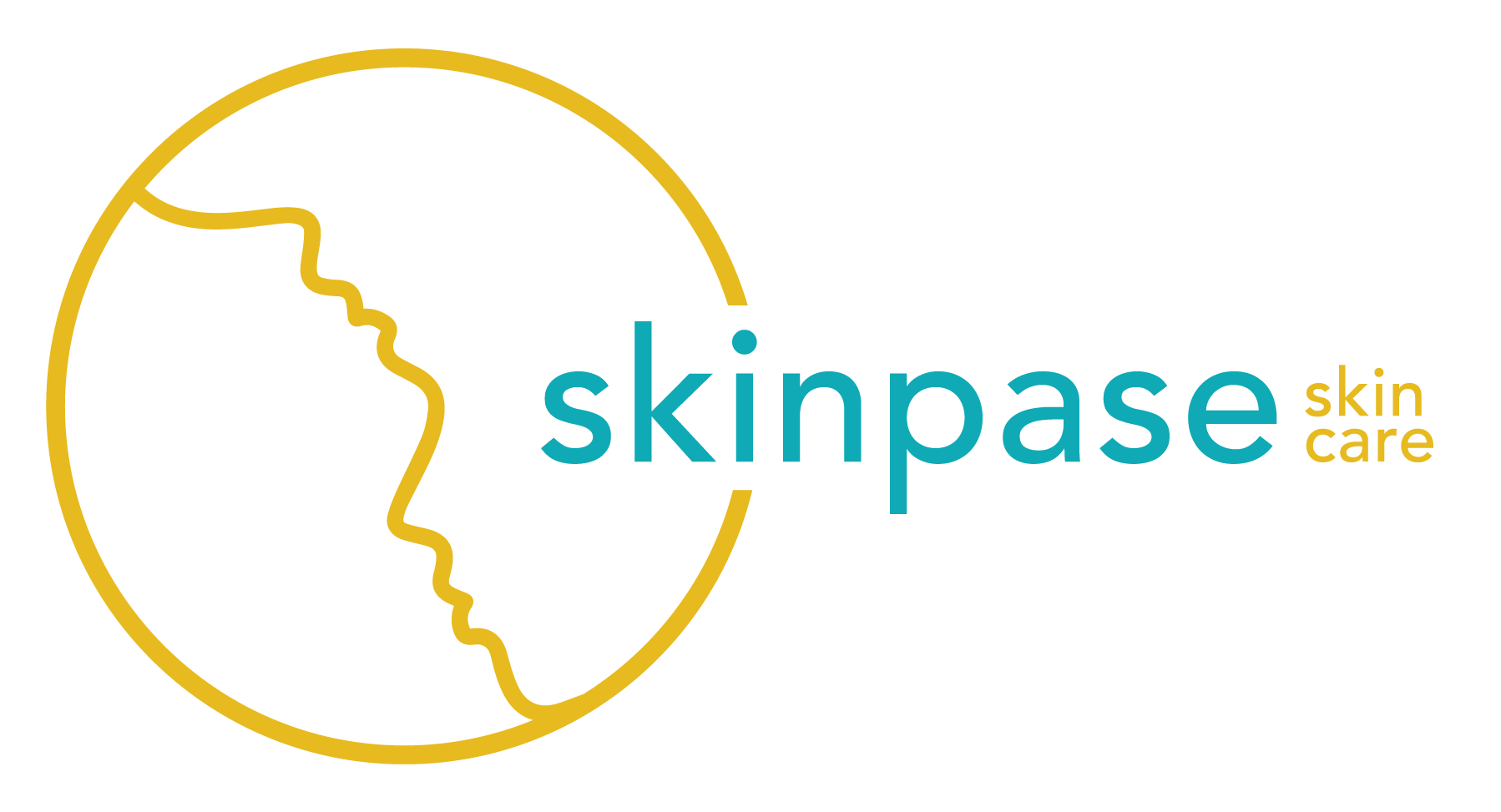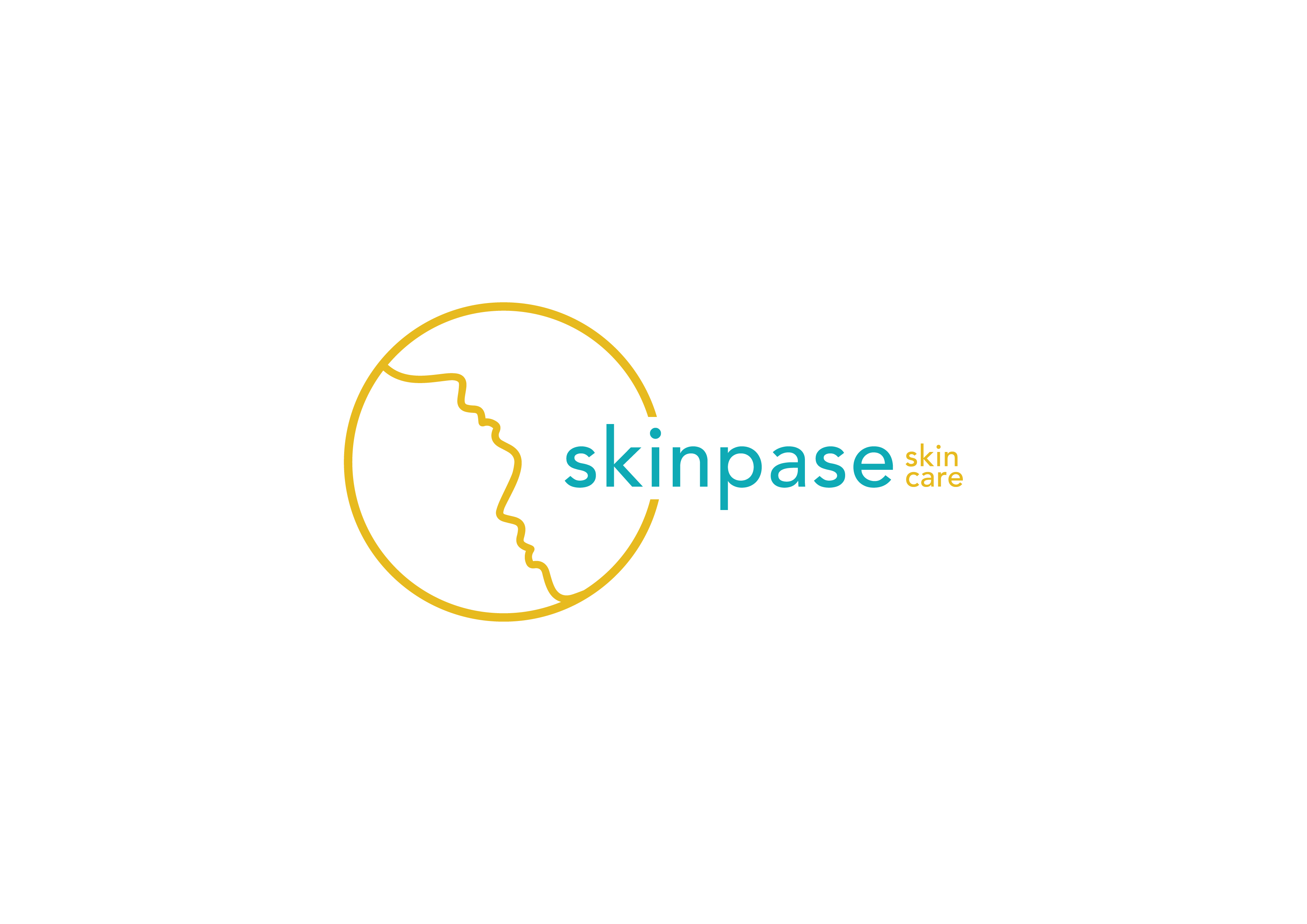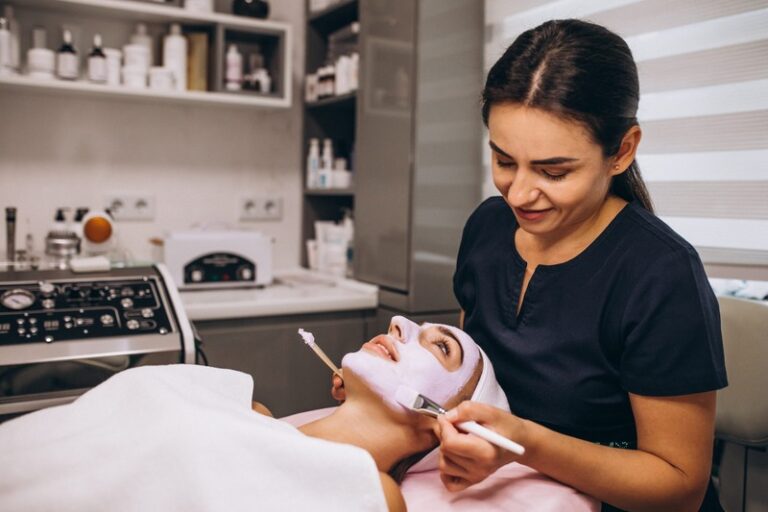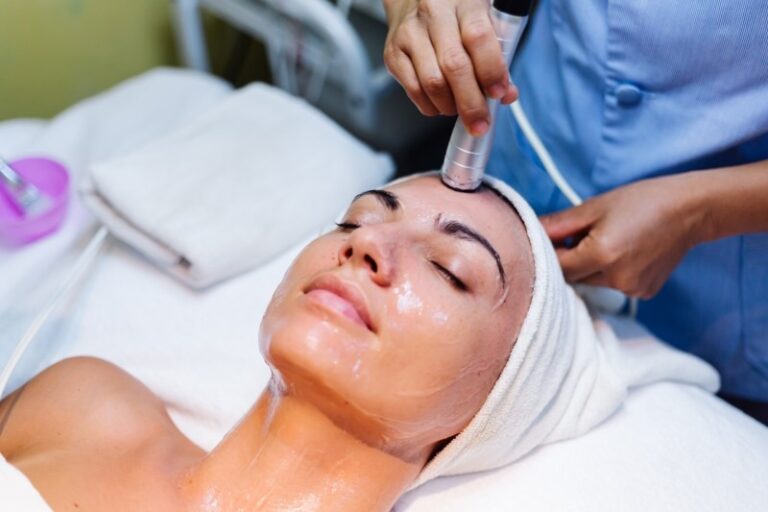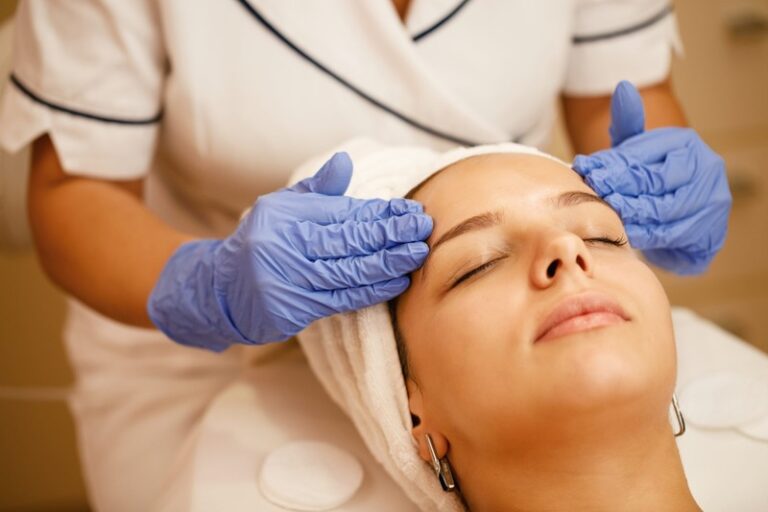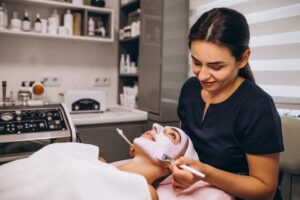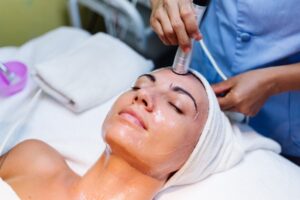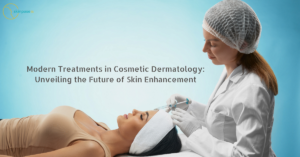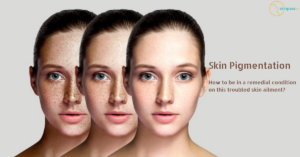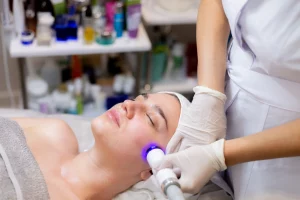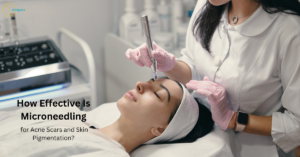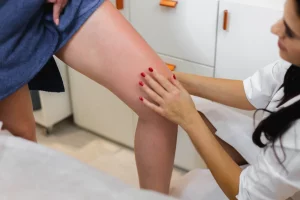Skin Chemical Peeling Treatment at Skinpase
What is a Chemical Peel?
Chemical peels are medical procedures carried out by licensed dermatologists. When contacted with chemicals, the skin’s outer layer eventually starts to peel off and leave new skin that is typically firmer and more smooth. Chemical peels are often applied to the face, but some people also like to have them applied to their hands and necks since they are an excellent, reasonably priced way to give their body the rejuvenation it requires.
Chemical peel for skin whitening frequently have additional benefits that advance the skin texture if you have acne-prone face, lines, spots, melasma, scars, or your skin has received a lot of sun exposure in the past few months. These treatments are beneficial for those with uneven skin pigmentation since they enhance the appearance and texture of their skin.
Types of chemical peels
- Superficial Peel
The topmost layer of skin is penetrated with a mild acid in this procedure. It is employed to cure skin texture and minor skin discolouration. Another name for a superficial peel is midday peel.
- Medium Peel
Glycolic acid and other acids are used to polish the middle layer of the skin. Age patches, wrinkles, fine lines, blemishes, and skin discolouration can all be treated with this.
- Deep Peel
To extensively infiltrate the middle layers of skin, a acid, like trichloroacetic acid, is utilised. The skin might respond quite favourably to deep peels. Deep peels can also be used to address age spots, wrinkles, and scarring.
Chemical Peel Aftercare
Following your chemical peel for skin whitening, taking good care of the treated area can assist extend outcomes and minimize unwanted effects. To protect the wellbeing of your skin after a peel, we advise adopting the following precautions:
- Until your skin has recovered, keep it out of the sun and from UV rays, especially those from sunbeds, and wear sunscreen every day.
- Avoid picking at any crusties that may appear while healing is taking place.
- Apply makeup when the skin has had time to recover. You can usually wear makeup the next day if your peel was mild.
- To get the best results, strictly adhere to any instructions your dermatologist tells you for the healing procedure.
Apart from chemical peels, skin whitening, skin tightening, anti aging treatments, botox and fillers, vampire facelift, double chin reduction etc are a few cosmetic treatment procedures performed by our skilled dermatologists.
Frequently Asked Questions
What types of skin issues can chemical peels treat?
Chemical peels can be used to treat types of skin issues including:
- Fine traces and wrinkles, sun damage and age spots
- Uneven skin tone and texture
- Hyperpigmentation and melasma
- scars resulting from damage or surgical treatment
- Dull complexion or loss of radiance etc
However, it is necessary that the sort and strength of the chemical peel used may depend on the precise skin ailment being handled.
How is chemical peel performed on skin?
A chemical peel usually includes the following steps:
Initially the pores and skin is very well cleaned. The solution that includes one or more chemical exfoliants is then applied to the skin and left for a specific amount of time. During this time, the synthetic compounds disintegrate the top layer of skin.The chemical layer is neutralized with water or a special solution after the preferred amount of time has passed.Then a relieving balm or cream is applied to the skin to alleviate any redness, disturbance, or uneasiness.
Depending on the treatment area being handled and the sort of peel used, the whole procedure may typically takes 30 to 60 minutes.
What should I expect after a chemical peel treatment?
You can see some redness and peeling of the skin. The severity and duration of these results depends on the form of peel used. The patient have to follow treatment tips given by your dermatologist to ensure proper healing and to decrease the complications. You need to avoid direct daylight and wear sunscreen after a chemical peel, as your skin could be more sensitive to UV rays. You should also need to avoid skincare products for some days after your peel, as directed by your dermatologist.
How long does a chemical peel take?
The type and strength of a chemical peel determine how long the treatment will last. A chemical peel typically takes between 30minutes and 1 hour to complete.
In most cases, superficial peels are completed in the short amount of time. It can be finished in between 15 and 20 minutes.Peels with a medium depth may take 30 to 45 minutes to complete. Deep peels,the strongest type of chemical peel may take up to two hours to complete and penetrate deeper into the skin than superficial peels.
It’s important to remember that the duration of chemical peeling treatment depends on the treatment area, the number of layers of the solution used, and the individual’s skin type and conditions.
Are there any risks or side effects of chemical peels?
There are potential side effects associated with chemical peels. The following are some of the most typical dangers and side effects of chemical peels:
- Itchness and redness: This is normal and usually goes away in a few days to a week as the body heals.
- Sunlight sensitivity: After a chemical peel, your skin will be more sensitive to sunlight, so it’s important to wear sunscreen with an SPF of 30 or higher and stay out of direct sunlight.
- Infection: There is a gamble of contamination after a compound strip in the event that legitimate post-treatment care directions are not followed.
- Scarring: If the peel is too strong or the skin is not properly cared for after the treatment, it can sometimes leave scars.
- Coloration of the skin: Substance strips can cause changes in skin tone, particularly in individuals with hazier complexions. Therefore, select the appropriate peel for your skin type and condition.
- Reactions to allergies: The chemicals used in a chemical peel may trigger an allergic reaction in some individuals.
Who is a good candidate for a skin chemical peel treatment?
Many individuals who need to improve their skin’s texture and look can gain from a chemical peel.The humans having pimples or acne scars, fine lines and wrinkles, darkish spots, hyperpigmentation, uneven skin tone or texture, sun exposed damage, age spots, melasma, rough skin and so on can pick the chemical peel treatment.
Chemical peels should be completely avoided by individuals with particular skin diseases like dermatitis or psoriasis as it may become worse their situation. Chemical peels should also be avoided by pregnant or breastfeeding women due to the fact the chemical substances used in the method may harm the infant.
How long do the results of a chemical peel last?
The time span of the results of a chemical peel treatment depends on the kind of peel used and the person’s skin type, his life style, exposure to sun etc. Superficial peels typically produce results that lasts for some weeks to several months. Medium-depth peels can last for several months to a year, while deep peels can provide long-lasting outcomes which could sustain for several years. However, it’s important to observe that the ageing process and sun’s exposure can harm the outcomes of the peel, so it’s critical to maintain an excellent skincare routine and guard your skin from the sun to maximise the longevity of the effects.
How can I maintain the results of a chemical peel?
It’s important to follow a good skin care routine which includes gentle cleansers, moisturizers, sunscreen etc. The patient must also avoid using harsh skincare products or exfoliants that irritates the skin. It’s also important to protect your skin from the sun by wearing sunglasses and applying sunscreen regularly.
Latest Blogs
Updated Blogs & News
In recent years, cosmetic dermatology has undergone a remarkable transformation, introducing a plethora of cutting-edge treatments.They have altered our approach...
Our skin is the largest organ on our body and it’s the first thing people notice of our health or...
Looking to achieve a more youthful and Healthy Skin? If yes, you should strongly consider Laser skin resurfacing. By eliminating...
Introduction The quest for perfect, radiant skin is an aspiration shared by many individuals round the world. Skin pigmentation problems...
The sun is a powerful force that can be both beneficial and dangerous to our health. Sunlight is...
Thread veins and varicose veins are two types of veins that can cause discomfort and embarrassment. Thread veins...

